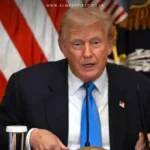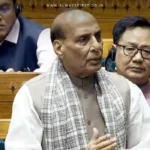
Diplomatic Engagement at Lancaster House
High-level trade negotiations between the United States and China commenced in London at Lancaster House on Monday, June 9, 2025. The two-day talks aim to address escalating tensions over tariffs, export controls, and rare earth mineral exports. U.S. officials, including Treasury Secretary Scott Bessent, Commerce Secretary Howard Lutnick, and Trade Representative Jamieson Greer, are meeting with Chinese Vice Premier He Lifeng to discuss these critical issues. The discussions follow a 90-day suspension of heavy tariffs agreed upon during talks in Geneva last month, amid growing concerns over a potential global recession.
Focus on Rare Earth Exports and Semiconductor Access
A central topic of the negotiations is China’s export of rare earth minerals, which are essential for various high-tech industries, including electric vehicles and electronics. The U.S. is urging China to accelerate the export of these critical materials, while China has announced the approval of some export licenses as a gesture of goodwill. Kevin Hassett, director of the National Economic Council, expressed optimism about the outcome, suggesting swift agreements that could include China releasing rare earths and the U.S. easing semiconductor access.
Market Reactions and Economic Implications
The announcement of the trade talks has had a significant impact on global markets. U.S. stock futures rose, with the S&P 500 briefly hitting the 6,000 level. Semiconductor stocks such as Nvidia and AMD saw gains, and the Nasdaq Composite experienced an uptick. Treasury yields declined, and the dollar weakened slightly. However, concerns persist regarding the broader economic implications of the trade tensions. China’s exports to the U.S. fell 34.5% in May, and U.S. GDP contracted in Q1, indicating the strain on both economies.
Challenges in Achieving Comprehensive Agreements
Despite the optimism surrounding the talks, analysts caution that comprehensive agreements may be challenging to achieve. The U.S. seeks to pressure China to adjust its economic practices, while China remains committed to its state-directed economic model and self-reliance. President Trump’s inconsistent trade diplomacy and recent high tariffs have strained relations, causing unrest in both economies. Trade between the two nations has dropped significantly, though indirect trade via other countries continues. The U.S. wants to increase domestic production of strategic goods and lessen dependence on China, criticizing China’s low domestic consumption and transparency. However, under President Xi Jinping’s “dual-circulation” policy, China is unlikely to reform its economic structure.
Broader Geopolitical Context
The trade talks in London are set against a backdrop of shifting global alliances and economic strategies. The U.S. has been pursuing a policy of reducing reliance on Chinese supply chains, while China continues to push for technological self-sufficiency through initiatives like “Made in China 2025.” Additionally, the U.S. is engaging in trade negotiations with other countries, such as the United Kingdom, to strengthen economic partnerships and diversify supply chains.
Looking Ahead
As the trade talks in London continue, the world watches closely to see if the U.S. and China can reach meaningful agreements that address the underlying issues of their trade relationship. While immediate market reactions have been positive, the long-term impact will depend on the willingness of both nations to make concessions and find common ground. The outcome of these negotiations could have significant implications for global trade dynamics and economic stability in the coming years.









































Leave a Reply